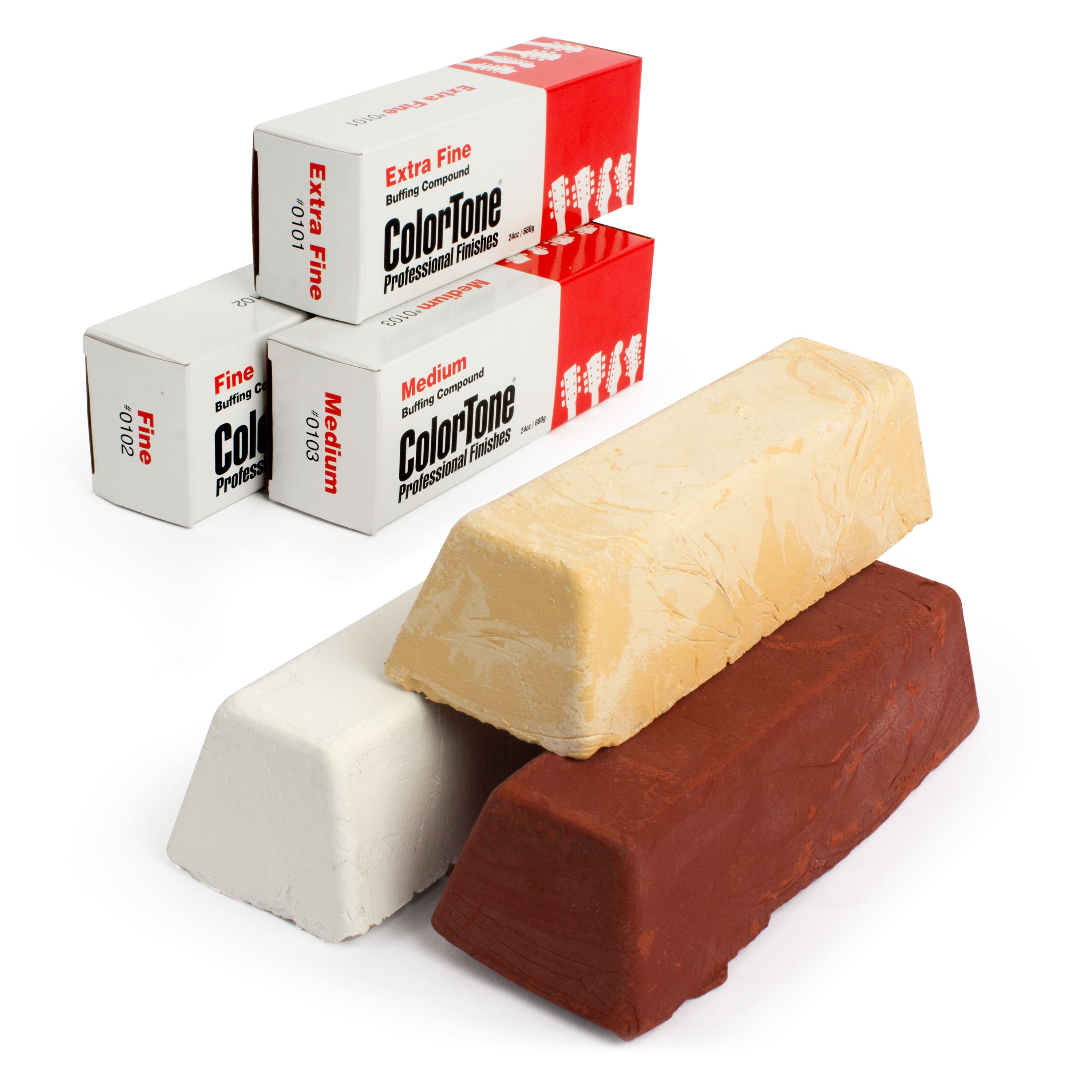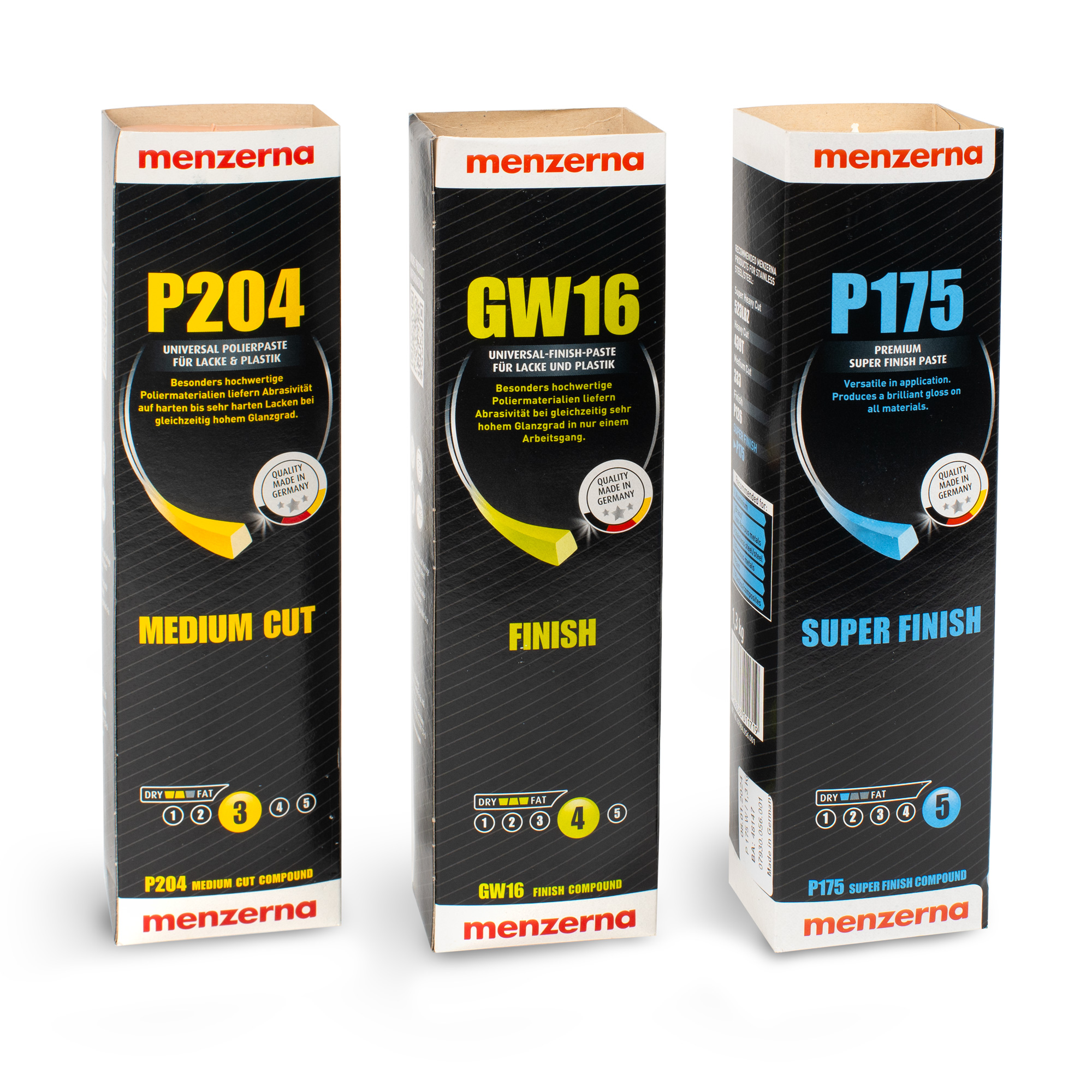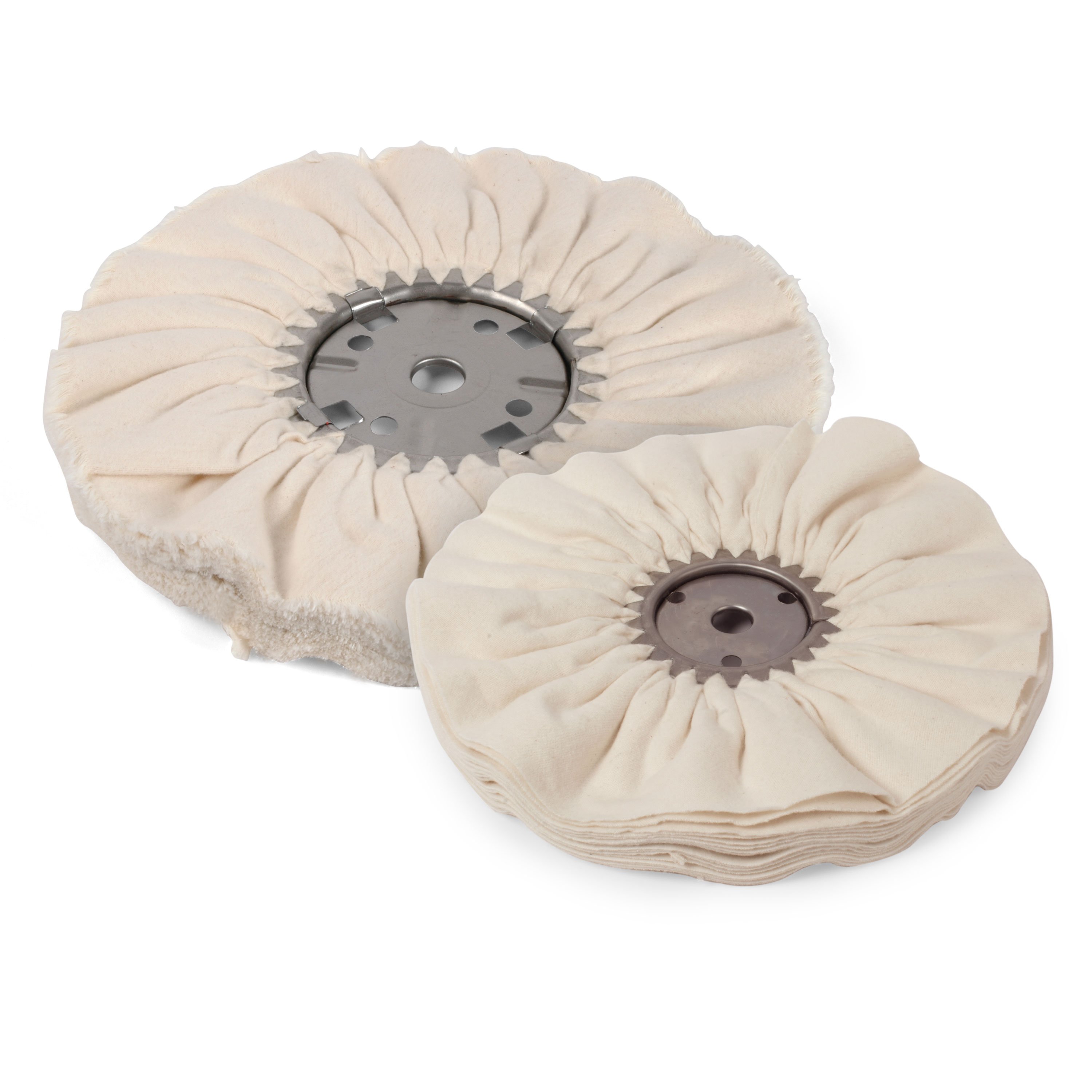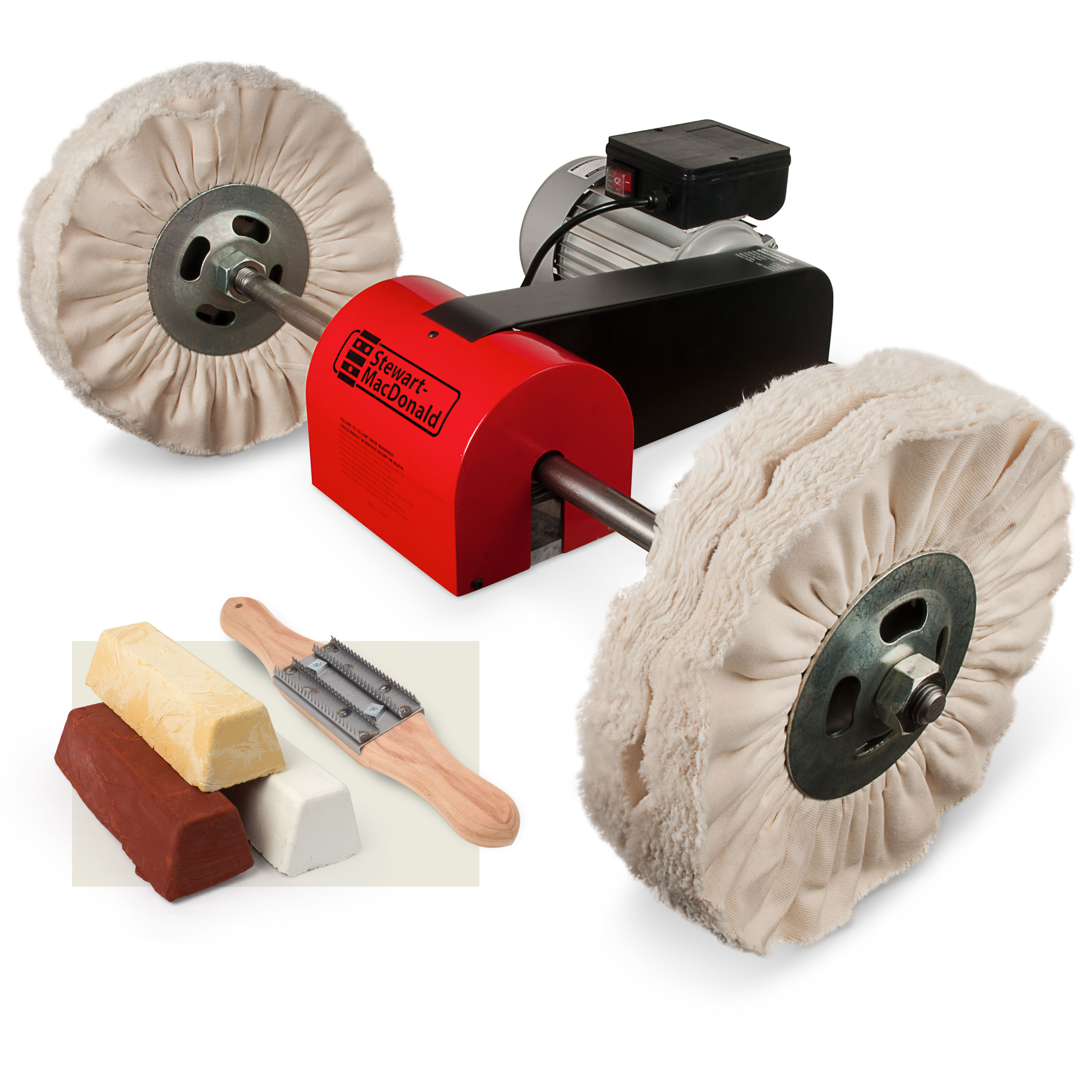Don't mix buffing compound
An overview of the basics of buffing with compounds.
Prepare your instrument by applying a sufficient amount of finish (lacquer, etc.) and allow ample drying time. Wet-sand the finish. (Learn why, what, and how to wet-sand in this article: Wet-sand before buffing.) Apply the compound to the buffing wheel, not directly to the finish. Begin with ColorTone Medium Buffing Compound after final sanding to 1200-grit. Follow with Fine, then Extra Fine for a showroom grade high gloss finish. Apply the buffing compound to the wheel by holding the bar of compound in contact with the spinning buffs (see the diagram below). Dedicate one set of buffs to each compound. Don't mix compounds on the same wheel. You'll soon get a feel for how hard and how often to apply the compound. You can polish in any direction, with or across the grain. See a quick demo on applying compound and changing buffs in this video for the Guitar Buffer. Too much pressure and too little compound can cause heat build-up, which will soften the finish and allow the buffs to drag the finish right off the surface. Buff from the center to the edge. Don't start right on an edge; it's delicate, and if you buff through the finish it will most likely be on an edge. The buffs also may "grab" an edge and possibly throw the instrument to the floor. Move the instrument up or down as you buff the finish. For the highest polish, the last movement should be in the downward direction as you take the instrument away from the wheel. Don't wear loose-fitting clothes that can get wrapped up in the rotating spindles. Wear a dust mask to filter the lint and other airborne particles that come off the wheel when in use. Wear appropriate eye protection. Don't present a corner or sharp edge of the instrument to the wheel, because it can catch the instrument and throw it at you!Basics of buffing with compounds
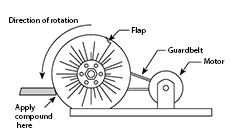
Important buffing precautions
Buffing safety
